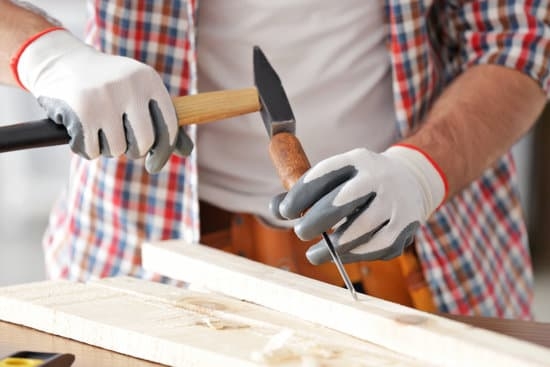Rough cut woodworking tools play a crucial role in crafting beautiful and sturdy pieces of woodwork. These tools are essential for transforming raw, untreated wood into works of art that showcase the natural beauty of the material. Whether you are a beginner looking to try your hand at woodworking or an experienced craftsman wanting to expand your skills, understanding how to use rough cut woodworking tools is key.
Using rough cut wood in your projects offers a range of benefits, from cost-effectiveness to unique aesthetic appeal. The textured surface and rustic charm of rough cut wood add character to furniture, flooring, and other woodworking projects. By utilizing rough cut wood, craftsmen can create one-of-a-kind pieces that stand out from mass-produced options on the market.
For beginners just starting out in woodworking, it’s important to have the right tools at hand. From basic saws and chisels to more specialized equipment like planers and jointers, having a well-rounded collection of rough cut woodworking tools can make all the difference in the quality and efficiency of your projects.
As you gain experience and confidence in your woodworking skills, you may find yourself exploring advanced tools such as routers, sanders, and lathes to take your creations to the next level.
Benefits of Using Rough Cut Wood
Rough cut woodworking tools offer many benefits for woodworking enthusiasts who are looking to create unique and customized pieces. One of the main advantages of using rough cut wood is the cost-effectiveness. Since rough cut wood has not been planed or processed, it is often less expensive than its pre-surfaced counterpart. This makes it a great option for those looking to save money on materials without compromising on quality.
Another benefit of using rough cut wood is the ability to customize the thickness and dimensions of the wood to fit specific project requirements. With rough cut wood, woodworkers have more flexibility in creating pieces that are tailored to their exact needs, whether it be for furniture, cabinets, or decorative items. This customization also allows for more creative freedom in design choices, as rough cut wood can be shaped and sized according to individual preferences.
Additionally, working with rough cut wood provides a sense of satisfaction and accomplishment as woodworkers are able to see the transformation from raw material to finished product firsthand. The process of shaping and smoothing rough cut wood requires skill and precision, making each piece a true work of art. Whether you are a beginner looking to hone your woodworking skills or an experienced craftsman seeking a new challenge, rough cut woodworking tools offer endless opportunities for creativity and craftsmanship.
- Cost-effective option compared to pre-surfaced wood
- Customizable thickness and dimensions for specific project needs
- Sense of satisfaction and accomplishment in crafting unique pieces
Essential Rough Cut Woodworking Tools for Beginners
Woodworking can be a rewarding hobby or profession, but getting started can be intimidating, especially when it comes to choosing the right tools. For beginners looking to work with rough cut wood, there are a few essential tools that will make the process much smoother.
One of the most basic tools is a reliable saw, such as a circular saw or a handsaw, which will be necessary for cutting rough cut wood to size. A good quality chisel set is also important for trimming and shaping wood pieces.
In addition to saws and chisels, having a sturdy workbench with clamps is crucial for securing rough cut wood while working on it. This will ensure safety and precision in your woodworking projects. A hammer and tape measure are also essential tools for any beginner woodworker working with rough cut wood. These simple tools will help you accurately measure and assemble your projects with ease.
For those just starting out in woodworking, investing in quality tools from reputable brands is key to ensuring that your projects turn out well. While it may be tempting to opt for cheaper options, investing in durable tools will save you time and frustration in the long run. With these essential rough cut woodworking tools for beginners, you’ll be well on your way to creating beautiful pieces from raw wood materials.
| Tools | Importance |
|---|---|
| Saw (circular or handsaw) | Necessary for cutting rough cut wood |
| Chisel set | Important for trimming and shaping wood pieces |
| Workbench with clamps | Crucial for securing rough cut wood while working |
| Hammer and tape measure | Essential for accurate measurement and assembly |
Advanced Rough Cut Woodworking Tools for Experienced Woodworkers
Experienced woodworkers often find themselves in need of more advanced tools to tackle complex projects using rough cut wood. These tools are designed to provide precision, efficiency, and versatility in woodworking tasks. One of the essential advanced rough cut woodworking tools is a jointer. Jointers are used to create a flat surface on one face of the board, allowing for seamless joining with other pieces of wood.
Another indispensable tool for experienced woodworkers is a thickness planer. This tool enables woodworkers to achieve uniform thickness across the entire surface of the rough cut wood, making it easier to work with and ensuring consistent results in the final project. Additionally, a band saw is a versatile tool that can make curved cuts, resaw thick boards into thinner pieces, and even create intricate designs on rough cut wood.
For more specialized tasks, experienced woodworkers may also invest in a drum sander for smoothing out large surfaces, a router table for precise shaping and joinery, or a scroll saw for detailed and delicate cutting work. These advanced rough cut woodworking tools not only enhance the quality of the finished project but also streamline the woodworking process for seasoned craftsmen.
| Tools | Function |
|---|---|
| Jointer | Create flat surfaces on boards |
| Thickness Planer | Achieve uniform thickness across rough cut wood |
| Band Saw | Make curved cuts and intricate designs on rough cut wood |
Safety Tips When Using Rough Cut Woodworking Tools
Working with rough cut woodworking tools can be a rewarding and fulfilling experience, but it also comes with its own set of risks if proper safety measures are not followed. In this section, we will discuss some important safety tips to keep in mind when using rough cut woodworking tools to ensure a safe working environment.
Wear Proper Safety Gear
One of the most crucial safety precautions when working with rough cut woodworking tools is to always wear the appropriate safety gear. This includes wearing safety goggles to protect your eyes from flying wood chips or dust, ear protection to guard against loud noises produced by power tools, and safety gloves to protect your hands from sharp edges or splinters.
Inspect Tools Regularly
Before starting any woodworking project using rough cut wood, it is essential to inspect your tools thoroughly. Check for any signs of damage or wear and tear that could compromise their functionality or safety. It is important to ensure that all blades are sharp and in good condition, as dull blades can cause kickbacks or accidents during use.
Work in a Well-Ventilated Area
When working with rough cut wood and woodworking tools, it is necessary to work in a well-ventilated area. This helps in reducing exposure to sawdust, fumes from varnishes or finishes, and other airborne particles that could potentially cause respiratory issues. Additionally, proper ventilation helps maintain a clear workspace for better visibility and focus while using rough cut woodworking tools.
By following these safety tips when using rough cut woodworking tools, you can create a secure working environment and reduce the risk of accidents or injuries while pursuing your passion for woodworking. Remember that prioritizing safety should always be the first step before embarking on any woodworking project involving rough cut wood.
How to Choose the Right Rough Cut Wood for Your Project
When embarking on a woodworking project, choosing the right rough cut wood is essential to ensure the success of your creation. The type of wood you select can greatly impact the overall look, durability, and functionality of your finished piece. Here are some key factors to consider when choosing the right rough cut wood for your project.
Wood Species
One important consideration when selecting rough cut wood is the species of wood itself. Different types of wood have unique characteristics in terms of color, grain pattern, hardness, and workability. Some popular options for woodworking projects include oak, maple, cherry, and walnut. It’s crucial to choose a wood species that not only complements the design of your project but also suits its intended use.
Grain Pattern
The grain pattern of rough cut wood can significantly affect the aesthetic appeal of your project. Some woods have prominent and intricate grain patterns that add visual interest and character to furniture pieces or decorative items. Consider how you want the grain pattern to enhance the overall look of your project and select rough cut wood accordingly.
Quality and Stability
When choosing rough cut wood for your project, it’s important to assess the quality and stability of the material. Look for boards that are free from defects like knots, cracks, or warping, as these can weaken the structure of your finished piece. Additionally, consider the moisture content of the wood to prevent any potential shrinking or expanding after construction. Investing in high-quality rough cut wood will ensure a long-lasting and professional result.
By carefully considering factors such as wood species, grain pattern, quality, and stability when choosing rough cut wood for your project, you can create stunning woodworking pieces that showcase craftsmanship and artistry. Remember to take your time in selecting the right materials for each project to achieve outstanding results with rough cut woodworking tools at hand.
Common Mistakes to Avoid When Working With Rough Cut Wood
Working with rough cut wood can be a rewarding experience, but it also comes with its challenges. One of the most important aspects of successfully working with rough cut wood is avoiding common mistakes that can ruin your project and even pose safety hazards. Here are some key mistakes to avoid when working with rough cut woodworking tools.
One common mistake to avoid is neglecting to properly acclimate your rough cut wood before starting your project. Rough cut wood often contains a high moisture content, and if you start working with it right away, it can lead to warping, splitting, or other problems as the wood dries out. Make sure to store your wood in a dry, well-ventilated area for at least a few weeks before using it in your project.
Another mistake to avoid is using the wrong tools for the job. Rough cut woodworking requires specific tools that can handle the uneven surfaces and irregular shapes of the wood. Using tools that are not designed for rough cut woodworking can result in damage to the tools as well as poor results in your project. Invest in quality rough cut woodworking tools such as hand planes, drawknives, and spoke shaves to ensure smooth and precise work.
Lastly, one crucial mistake to avoid when working with rough cut wood is rushing through the preparation process. Taking the time to properly measure, mark, and plan your cuts will result in a more polished final product. Rushing through these steps can lead to inaccuracies and mistakes that may be difficult or impossible to correct later on. Patience is key when working with rough cut wood – take your time and enjoy the process of creating something beautiful from raw materials.
Maintaining and Sharpening Rough Cut Woodworking Tools
Regularly inspect your tools for any signs of wear or damage. This includes checking for loose handles, dull blades, or rust. Clean your tools after each use to prevent build-up of debris and moisture, which can lead to corrosion. Use a soft cloth to wipe down the surfaces of your tools and a brush to remove any sawdust or shavings from hard-to-reach areas.
Sharpening your rough cut woodworking tools is crucial for maintaining their cutting efficiency. Invest in a good quality sharpening stone or file suitable for the type of blades you have. Follow the manufacturer’s instructions on how to properly sharpen each specific tool, as different blades require different techniques. Regularly honing your blades will not only improve their cutting performance but also reduce the risk of accidents caused by using dull tools.
In addition to sharpening your tools, it is important to store them properly when not in use. Keep them in a dry environment away from moisture and humidity to prevent rusting. Consider using tool boxes or racks to organize and protect your rough cut woodworking tools. By taking care of your tools through regular maintenance and proper storage, you can ensure that they will always be ready for any woodworking project you take on.
Inspiring Rough Cut Woodworking Projects for Your Home or Workshop
Rough cut woodworking tools can open up a world of possibilities when it comes to creating beautiful and unique projects for your home or workshop. From rustic furniture to intricate sculptures, the rough cut wood enables you to add a touch of natural beauty and character to your creations. Whether you are a beginner looking to hone your skills or an experienced woodworker seeking a new challenge, there are endless inspiring projects waiting for you.
One of the most rewarding aspects of working with rough cut wood is the sense of accomplishment that comes from transforming raw materials into something both functional and visually stunning. Whether you choose to create a simple farmhouse-style table or a complex geometric wall art piece, the possibilities are truly endless. With the right tools, knowledge, and creativity, you can bring your vision to life and showcase your craftsmanship for all to admire.
Remember, safety should always be a top priority when working with rough cut woodworking tools. Always wear protective gear such as goggles and gloves, follow proper procedures when using power tools, and keep your work area clean and organized. By taking these precautions, you can ensure that your woodworking experience is not only enjoyable but also safe. So go ahead, unleash your creativity, and embark on your next rough cut woodworking project with confidence.
Frequently Asked Questions
What Do You Use to Rough Cut Wood?
To rough cut wood, you can use a variety of tools such as a circular saw, band saw, jigsaw, or table saw. These tools are commonly used to quickly cut lumber into more manageable sizes before the final smoothing and shaping.
What Is a Hand Tool for Smoothing Rough Cut Wood?
A hand tool typically used for smoothing rough cut wood is a hand plane. Hand planes come in various sizes and types, such as block planes, bench planes, and specialty planes like smoothing planes. They are essential for flattening and smoothing the surface of the wood.
Why Is Rough Cut Lumber Cheaper?
Rough cut lumber is cheaper than finished lumber primarily because it requires less processing and labor to produce. The milling process for rough cut lumber involves cutting the wood to approximate dimensions without planing or sanding. This results in lower production costs, making it a more cost-effective option for those willing to do additional finishing work themselves.

Hi everyone! I’m a woodworker and blogger, and this is my woodworking blog. In my blog, I share tips and tricks for woodworkers of all skill levels, as well as project ideas that you can try yourself.





